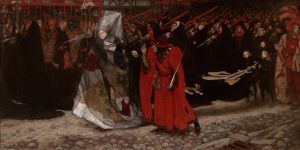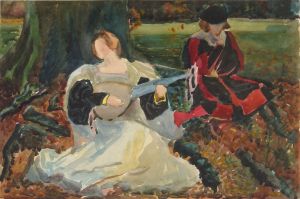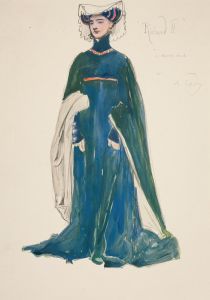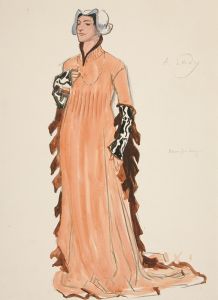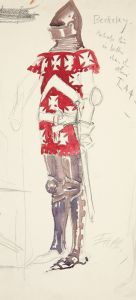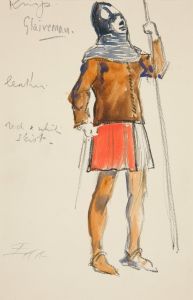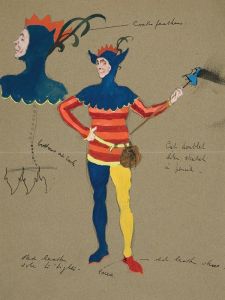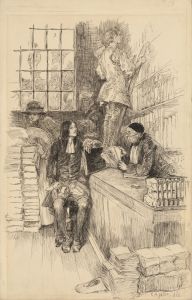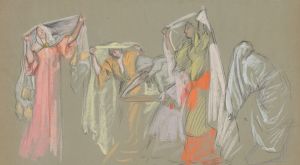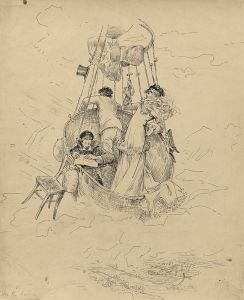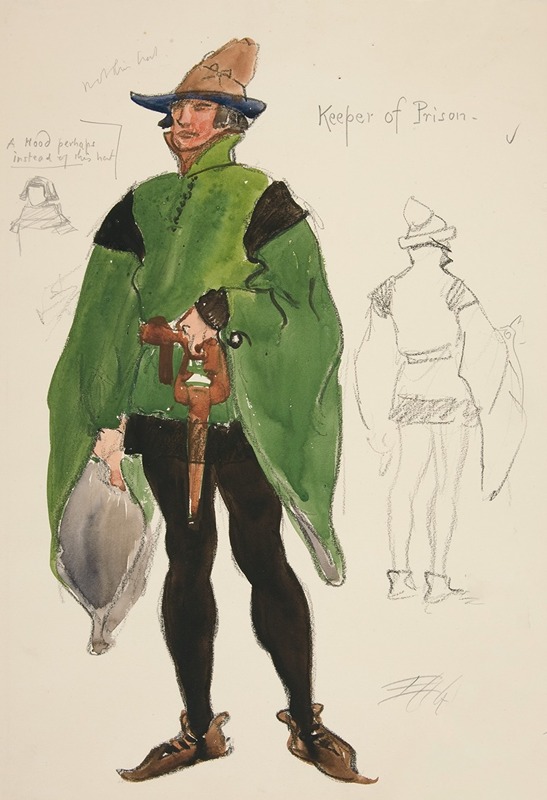
Keeper of Prison, costume sketch for Henry Irving’s 1898 Planned Production of Richard II
A hand-painted replica of Edwin Austin Abbey’s masterpiece Keeper of Prison, costume sketch for Henry Irving’s 1898 Planned Production of Richard II, meticulously crafted by professional artists to capture the true essence of the original. Each piece is created with museum-quality canvas and rare mineral pigments, carefully painted by experienced artists with delicate brushstrokes and rich, layered colors to perfectly recreate the texture of the original artwork. Unlike machine-printed reproductions, this hand-painted version brings the painting to life, infused with the artist’s emotions and skill in every stroke. Whether for personal collection or home decoration, it instantly elevates the artistic atmosphere of any space.
"Keeper of Prison, costume sketch for Henry Irving’s 1898 Planned Production of Richard II" is a notable artwork created by the American artist Edwin Austin Abbey. This piece is a costume sketch designed for the character of the Keeper of Prison in a planned production of William Shakespeare's play "Richard II," which was to be staged by the renowned British actor-manager Henry Irving in 1898.
Edwin Austin Abbey (1852-1911) was a prominent illustrator and painter, known for his detailed and historically accurate depictions of Shakespearean scenes and characters. Abbey's work often reflected his deep understanding of the historical and cultural contexts of the periods he illustrated. His collaboration with Henry Irving, one of the most famous actors and theatre managers of the Victorian era, highlights the intersection of visual art and theatrical performance during this time.
Henry Irving (1838-1905) was a significant figure in the theatre world, celebrated for his innovative productions and his dedication to elevating the standards of theatrical performance. His planned production of "Richard II" was part of his broader effort to bring Shakespeare's works to life with a high degree of historical authenticity and artistic integrity. Although the production ultimately did not come to fruition, the preparatory work, including Abbey's costume sketches, remains a testament to the meticulous planning and artistic vision that Irving and his collaborators brought to their theatrical endeavors.
The costume sketch for the Keeper of Prison reflects Abbey's attention to detail and his commitment to historical accuracy. The Keeper of Prison is a minor character in "Richard II," a play that explores themes of kingship, power, and the divine right of kings. The character's costume would have been designed to reflect the period's attire, likely drawing on historical sources to ensure authenticity. Abbey's sketches would have served as a guide for the costume designers and makers, ensuring that the final costumes were both visually striking and true to the historical setting of the play.
Abbey's work on this project is part of his larger body of Shakespearean illustrations, which includes numerous other sketches and paintings for various plays. His contributions to the visual representation of Shakespeare's works have been widely recognized and appreciated for their artistic merit and historical fidelity.
In summary, "Keeper of Prison, costume sketch for Henry Irving’s 1898 Planned Production of Richard II" by Edwin Austin Abbey is an important piece of theatrical and artistic history. It exemplifies the collaborative efforts of two prominent figures in the arts—Abbey and Irving—who sought to bring Shakespeare's works to life with a high degree of authenticity and artistic excellence. Although the production was never realized, the surviving sketches provide valuable insight into the meticulous planning and creative process behind such ambitious theatrical projects.





